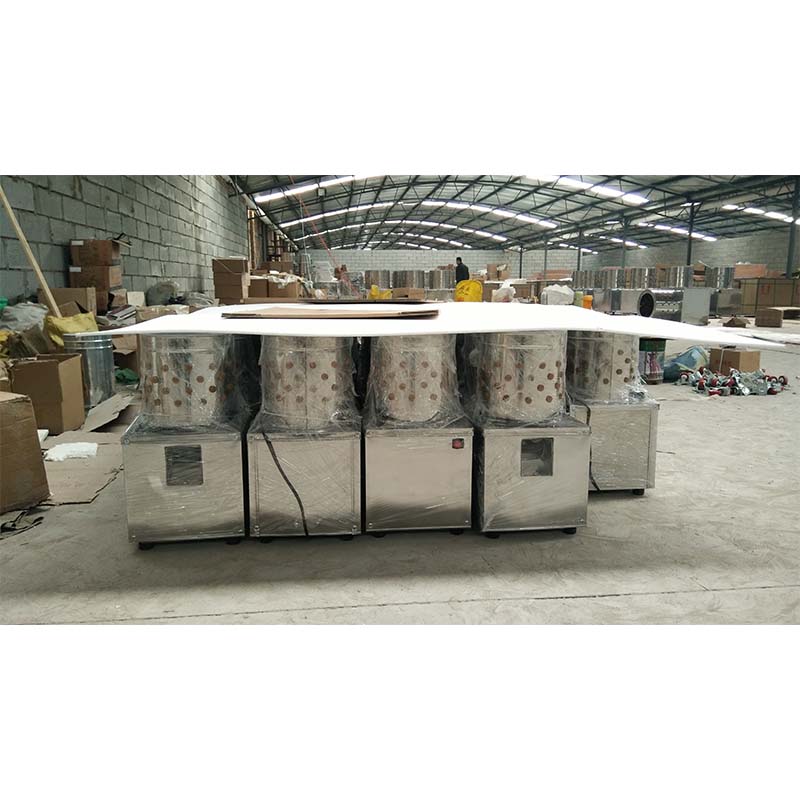Effective Techniques for Poultry Scalder Processes in Chicken Preparation
Dec . 28, 2024 15:58 Back to list
Effective Techniques for Poultry Scalder Processes in Chicken Preparation
The Importance of Chicken Scalders in Poultry Processing
In the poultry processing industry, efficiency and hygiene are paramount. One of the critical steps that ensure both these factors is the use of chicken scalders. Scalding, a process that involves immersing chickens in hot water, plays a vital role in preparing birds for plucking, enhancing both the quality of the meat and the efficiency of the processing operation.
Understanding Scalding
Scalding serves several essential purposes in the processing of chicken. Firstly, it helps in loosening the feathers from the skin, making the plucking process smoother. When chickens are slaughtered, the feathers are tightly attached to the skin. Scalding involves immersing the birds in hot water, typically heated to a temperature of around 140°F to 160°F (60°C to 71°C), depending on the processing method and the type of chicken. This temperature range is optimal for feather removal without causing any damage to the underlying skin or meat.
Types of Scalders
There are mainly two types of chicken scalders used in poultry processing batch scalders and continuous scalders.
1. Batch Scalders These are typically used in smaller processing plants and can handle a limited volume of chickens at a time. In a batch system, a set number of birds are scalded in a fixed amount of hot water. This method is straightforward but can be less efficient due to downtime between batches.
2. Continuous Scalders Larger processing plants often employ continuous scalders that operate in a more automated fashion. In this system, chickens are continuously fed into the scalding tank, where they are exposed to hot water as they move through the machine. This method significantly increases throughput and reduces labor costs, as the process is more streamlined and requires less manual handling.
chicken scalder

Benefits of Scalding
Scalding not only facilitates feather removal but also positively impacts the overall quality of the meat. It can help in relaxing the muscles of the chicken, ensuring that the meat remains tender and juicy after cooking. Additionally, the heat from the scalding process can reduce microbial load on the surface of the carcass, thereby enhancing food safety.
Moreover, effective scalding plays a critical role in meeting public health standards. With the increasing concern over foodborne illnesses, poultry processors must take necessary precautions at every stage of processing. An adequately heated scalder can help minimize the risk of contamination from pathogenic bacteria such as Salmonella and Campylobacter, which are commonly associated with poultry products.
Challenges and Innovations
Despite the advantages associated with scalding, the poultry processing industry faces challenges. Maintaining precise temperature control is crucial, as water that is too hot can cause skin damage, leading to product loss and customer dissatisfaction. Conversely, water that is not hot enough may fail to loosen feathers adequately, again affecting processing efficiency.
To address these challenges, many companies are investing in modern technology. Innovations like temperature sensors and automated monitoring systems allow processors to maintain optimal conditions consistently. Additionally, some facilities are exploring alternative methods, such as air scalding, which uses hot air instead of water to loosen feathers, offering a more environmentally friendly approach.
Conclusion
Chicken scalders are indispensable in the poultry processing industry. Their role in improving efficiency, ensuring meat quality, and maintaining food safety standards cannot be overstated. As the industry continues to evolve with technological advancements, the future of chicken scalding looks promising, paving the way for even more efficient and sustainable poultry processing practices. In an era where consumer expectations for quality and safety are higher than ever, the importance of effective scalding will undoubtedly remain a cornerstone of successful poultry production.
-
Hot Sale 24 & 18 Door Rabbit Cages - Premium Breeding Solutions
NewsJul.25,2025
-
Automatic Feeding Line System Pan Feeder Nipple Drinker - Anping County Yize Metal Products Co., Ltd.
NewsJul.21,2025
-
Automatic Feeding Line System Pan Feeder Nipple Drinker - Anping County Yize Metal Products Co., Ltd.
NewsJul.21,2025
-
Automatic Feeding Line System - Anping Yize | Precision & Nipple
NewsJul.21,2025
-
Automatic Feeding Line System - Anping Yize | Precision & Nipple
NewsJul.21,2025
-
Automatic Feeding Line System-Anping County Yize Metal Products Co., Ltd.|Efficient Feed Distribution&Customized Animal Farming Solutions
NewsJul.21,2025






